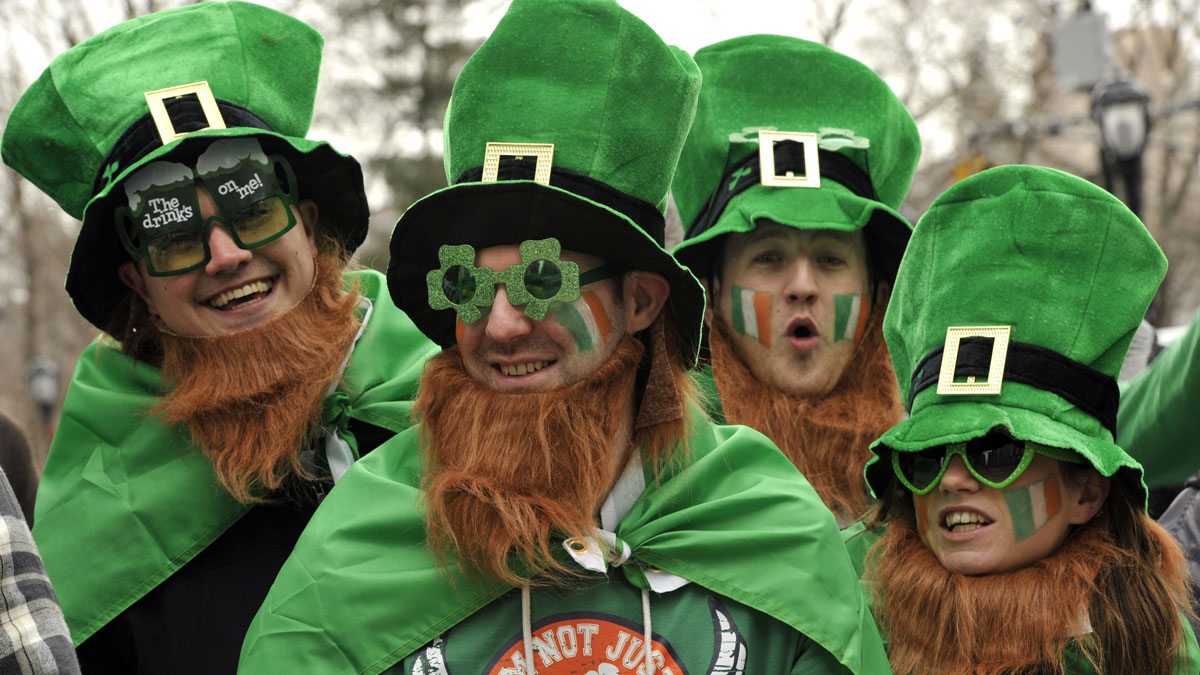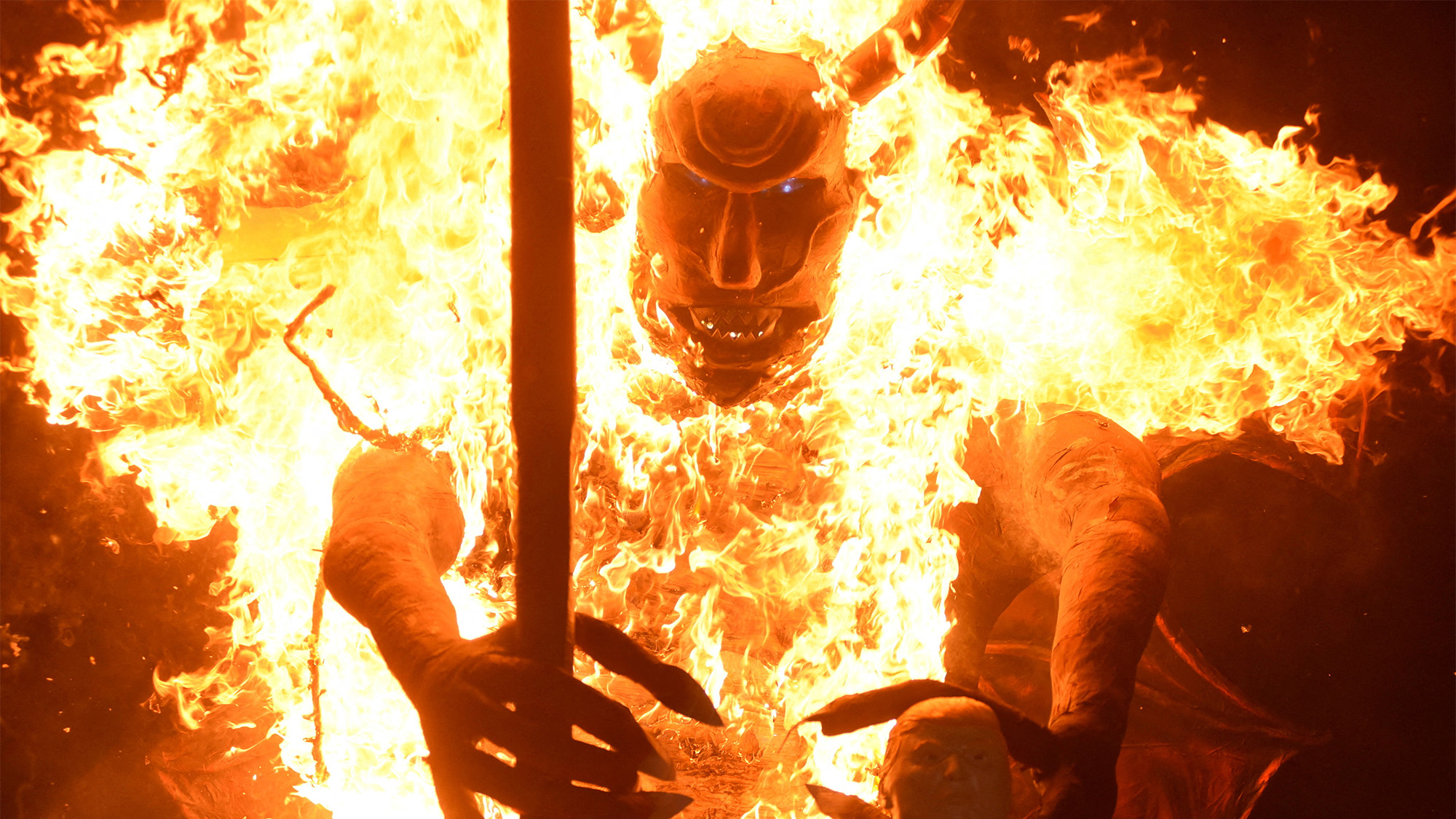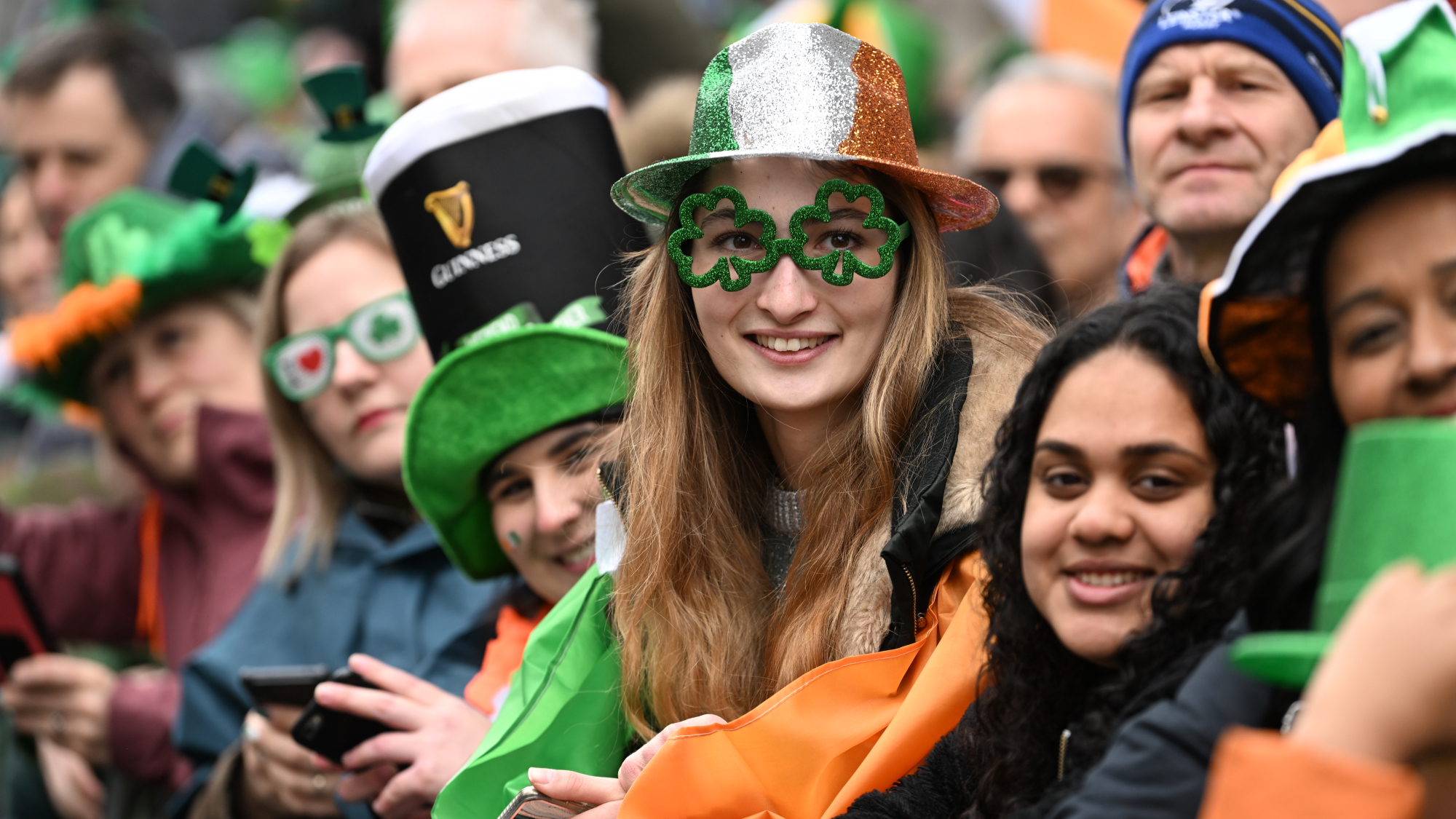The St Patrick’s Day myths and legends busted
Drinking and parades may now be holiday staples, but neither tradition hails from old Ireland

People around the world will don green regalia and raise a pint of Guinness to Ireland’s patron saint on 17 March, but many of the traditions associated with St Patrick are relatively new.
Colour me misinformed
An association with the colour green is relatively recent, Time Magazine reported, which said the knights of St Patrick actually wore a colour known as “St Patrick’s blue”. Modern academics also note that blue features prominently on many of Ireland’s ancient Celtic flags.
The use of green as a symbol of Ireland didn’t really become widespread until the end of the 18th century, when green banners were hoisted by the United Irishmen during the Irish Rebellion of 1798. The same period saw the shamrock adopted as an emblem of Irish nationalism – an association that continues today.
The Week
Escape your echo chamber. Get the facts behind the news, plus analysis from multiple perspectives.

Sign up for The Week's Free Newsletters
From our morning news briefing to a weekly Good News Newsletter, get the best of The Week delivered directly to your inbox.
From our morning news briefing to a weekly Good News Newsletter, get the best of The Week delivered directly to your inbox.
Green is now inextricably linked with Ireland and its patron saint. St Patrick’s Day parades, both in Ireland and the rest of the world, are awash with green costumes, flags and floats.
Booze, glorious booze
Another misconception surrounding St Patrick’s Day is that it has always been an excuse for a round of drinks. But although the occasion became an official public holiday in Ireland in 1903, thanks to campaigning in Westminster by Irish politician James O’Mara, public houses on the Emerald Isle weren’t allowed to open on 17 March until the 1960s for fear it could promote excessive drinking.
Since the repeal of these restrictions, drinking has become an integral part of the celebrations, giving pubs and breweries around the world much cause of celebration. More than 13 million glasses of Guinness are drunk around the world on 17 March – double the amount sold on any other given day, The Daily Telegraph reported. In what might come as a surprise to some, the biggest market is in Nigeria, where Patrick is also a patron saint. In the UK, the busiest Irish-themed O’Neill’s pubs can get through 16 barrels of Guinness in just one day – the norm is just half a barrel, the newspaper added.
If you’re planning on raising a glass – or three – to celebrate, popular Irish toasts include: “May the roof above us never fall in and may we friends beneath it never fall out.”
A free daily email with the biggest news stories of the day – and the best features from TheWeek.com
Rain on the Irish parade
Though unofficial St Patrick’s Day parades were commonplace in Ireland throughout the 19th century, the first official parade didn’t occur in Dublin until 1931. In fact, the St Patrick’s Day parade as we know it today is a largely American invention.
The first parade on US soil took place back in 1762, when Irish soldiers serving in the British army celebrated the holiday by marching through the streets of New York. By 1848 this parade was an annual city event, and today New York’s procession includes more than 150,000 people, and attracts nearly three million spectators.
But while New York has the St Patrick’s Day parade, Chicago invented its own tradition of dying the Chicago River green to mark the occasion. In 1962 sanitation workers realised that the green dye they used to check for illegally dumped sewage could double as a St Patrick’s Day decoration. The city has been greening its waterways ever since.
Nearly 35 million Americans claim some sort of Irish ancestry – that’s seven times the population of Ireland itself. Author Philip Freeman said: “St Patrick’s Day is basically an invention of this Irish American contingent... Modern celebrations really have very little to do with Irish traditions, or St Patrick himself.”
St Patrick and politics
The Americans also fostered a link between St Patrick’s Day and the civic and political life of many big cities, especially on the east coast, which had attracted big Irish populations. Police departments and fire brigades employed many Irish migrants, and became active participants in St Patrick’s Day parades. John F. Kennedy, himself of Irish-Catholic stock, said the celebration was “as purely American as it is Irish, recalling for all that ours is a nation founded, sustained, and now preserved in the cause of liberty. None more than the Irish can attest the power of that cause once it has gripped a nation’s soul.”
Who was St Patrick?
According to history.com, St Patrick was neither Irish nor called Patrick. Despite his relative “celebrity” among religious figures, St Patrick still “remains somewhat of a mystery”.
Born at the end of the fourth century to wealthy aristocratic parents in Roman Britain, St Patrick’s real name is believed to be Maewyn Succat, but his life took an unexpected turn at the age of 16 when he was kidnapped from his parents’ estate by Irish raiders.
Shipped to County Mayo as a slave, he spent the next six years working as a shepherd with only his faith to sustain him. Growing steadily more devout, St Patrick eventually managed to escape with the aid of a mysterious voice – a voice he believed to be God. Legend has it he walked a staggering 200 miles to reach the coast at the behest of the voice, returning to Britain as a stowaway on an Irish pirate ship.
Upon his return he quickly began a 15-year course of religious training, dedicating himself to God completely by becoming a priest. His religious training culminated with a dispatch back to Ireland on the church’s behalf, where he was charged with converting the country’s pagan population to Christianity. This is where the long-standing affiliation between Ireland and the shamrock is said to begin, with St Patrick supposedly using the three leaves of the plant to explain the holy trinity to Irish pagans.
-
 The week’s best photos
The week’s best photosIn Pictures A man's best friend, the elephants in the room, and more
-
 A TikTok trend has Gen Z men leaving streetwear behind for more preppy attire
A TikTok trend has Gen Z men leaving streetwear behind for more preppy attireThe Explainer More than a zipper: Young Black men embrace the ‘quarter-zip movement‘
-
 Codeword: December 12, 2025
Codeword: December 12, 2025The daily codeword puzzle from The Week
